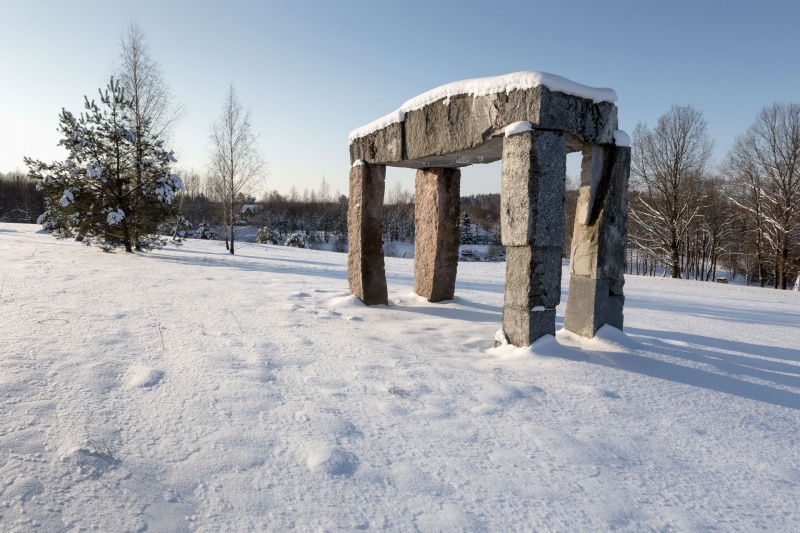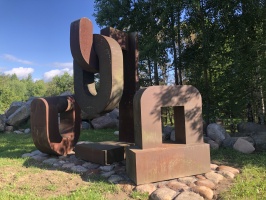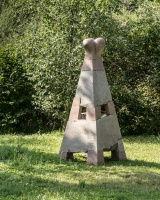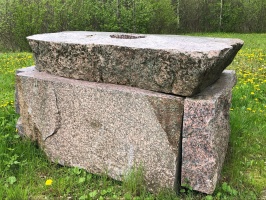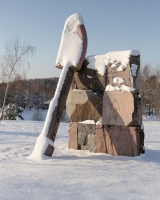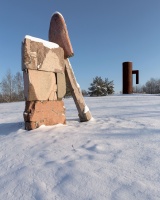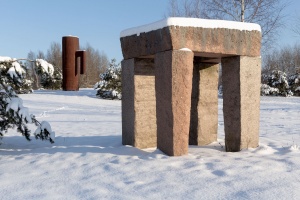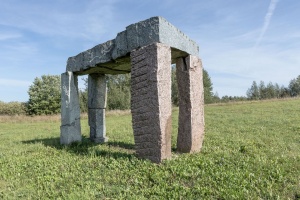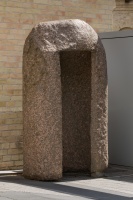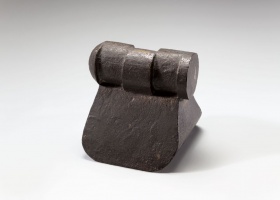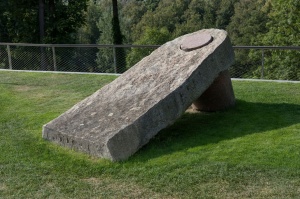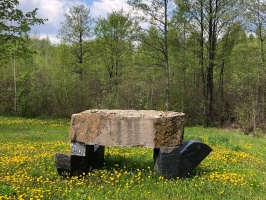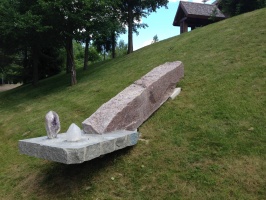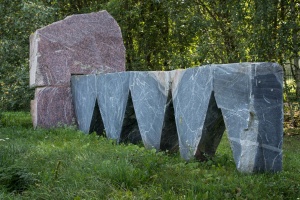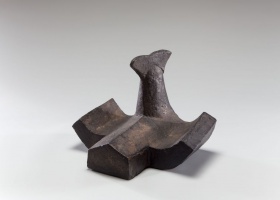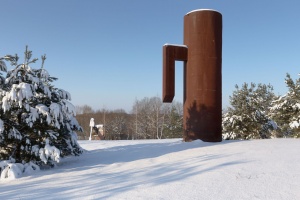
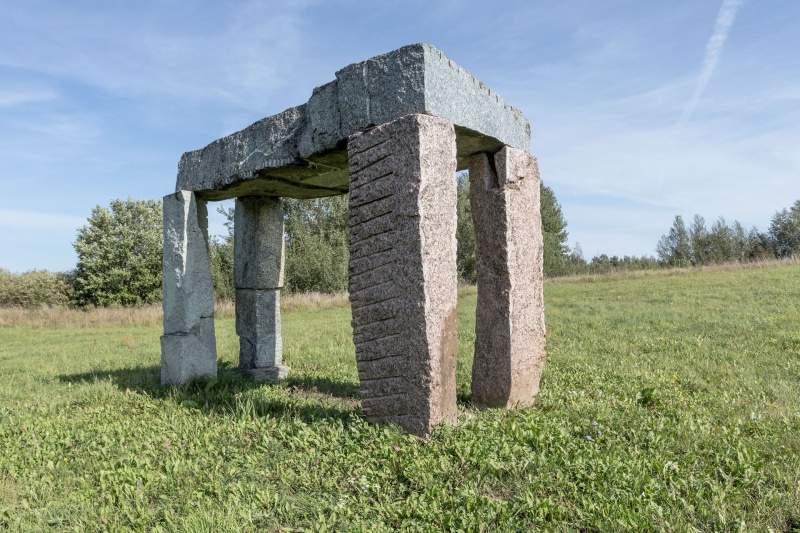


Shelter D
| Author: |
Mindaugas Navakas (g. 1952) |
| Created: | 2001 |
| Material: | granite |
| Dimensions: | 280 × 450 cm |
Two factors, material and scale, are of paramount importance in Mindaugas Navakas’ (b. 1952) artistic practice, contrary to the conventional view that they merely serve as formal elements in the realisation of the artist’s chosen concept. For Navakas, material and scale act as creators of content rather than form. The material selected by the artist dictates the essence of the work, while the scale establishes its relationship with the viewer. These are primary elements in his approach, guiding the creative process, with the content emerging from the material itself, rather than the other way round. Comprising four uneven granite pillars connected by a granite slab, Shelter D resembles a structure akin to four columns supporting a roof. Exhibited in the Botanic Gardens at Kairėnai in 2006 and 2007 as part of a collection of contemporary sculpture compiled by Elona Lubytė, the work exemplifies Navakas’ enduring exploration of the motif of housing and shelter. The sculptor confessed in an interview to being ‘corrupted by architecture’.* Shelter was one of the five projects awarded in the 1988 competition for monuments commemorating the founding of Vilnius, a decision that sparked much public debate at the time. Navakas’ granite structures evoke the majestic remnants of archaic cultures, resembling objects of ritual significance, or artefacts that never truly existed. His shelters inevitably resemble early megaliths and dolmens, their purpose and method of construction remaining a mystery to researchers. Despite his contemporary perspective, he manages to imbue his sculptures with an inexplicable primal vitality and a raw power that captivates viewers and transforms their surroundings. Navakas proudly recounts an engineering solution employed in creating this work: faced with two pieces of stone that were too small, the artist joined them together with a third piece. This connection, akin to a joint in carpentry, is visible only from below while standing inside the sculpture itself.
Text author Jurgita Ludavičienė
* Navakas studied architecture at the Kaunas Polytechnic Institute in 1969 and 1970.
Source: Law firm Valiunas Ellex art album THE ART OF MATERIALS. Compiler and text author Jurgita Ludavičienė© VŠĮ „Lietuvos dailės fondas“






